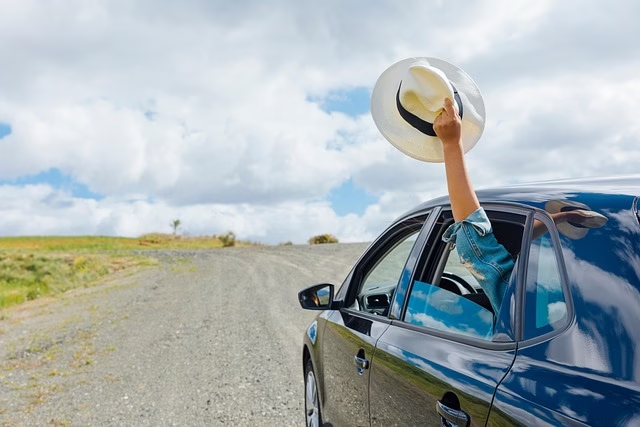Built-In Hotspots vs. Tethering: The Best Setup for Long Drives
Long drives used to be about the journey. You’d roll down the windows, crank the radio, and just drive. Now? It’s about connection. Music, maps, podcasts, work calls — everything runs online. The open road still matters, but being connected matters more.
That’s where the debate starts. Built-in hotspots or tethering from your phone? Both work. Both have pros and cons. The real question is which setup fits your lifestyle best.
Built-In Connectivity Is a Game Changer
Cars today come with more tech than some offices. Built-in systems can do almost anything — stream, navigate, even update themselves. Systems like OnStar take it even further. It’s not just a safety or roadside service anymore. It’s a full-blown connected platform.
Many vehicles with OnStar offer built-in Wi-Fi. It runs independently from your phone and creates a stable internet bubble inside the car. Everyone in the vehicle can connect. Kids can stream. Passengers can scroll. You can pull traffic updates or music playlists without missing a beat.
That’s the comfort of built-in tech. It works without fuss. You start the car, and the connection wakes up with you.
Why People Still Tether
Of course, not everyone wants or needs a built-in hotspot. Many drivers still tether their phones. It feels familiar. It’s easy. You turn on your phone’s hotspot and share data with your car or passengers.
The upside? You already pay for your mobile plan. No extra subscription. You don’t need to manage another account or system. For casual users, that’s enough.
But here’s the catch. Tethering eats battery fast. It drains your phone and heats it up. It also eats through mobile data if you’re not careful. And if you move through low-signal areas, the connection drops for everyone. That’s fine for short trips, but not great for long hauls.
Data Stability Matters More Than You Think
A built-in hotspot has one big advantage — consistent coverage. It usually pulls data from multiple networks or dedicated car modems. That means fewer dropouts and smoother streaming.
If you’ve ever tried tethering in the mountains, you know the pain. Music cuts. GPS freezes. Your phone starts overheating. Built-in systems don’t fight those same battles. They’re designed for the road. Antennas sit in the car’s frame, giving them better range and strength.
It’s the kind of difference you only notice after a few hours of driving. By the end, one setup feels effortless. The other feels like work.
The Hidden Cost of Convenience
Now, built-in hotspots sound great — and they are — but they’re not free. Most services come with a monthly or yearly plan. It’s another subscription to manage. That’s where some drivers hesitate.
Tethering, meanwhile, doesn’t need extra fees. You already own the phone. You already pay for data. The trade-off is comfort versus cost.
If you drive a lot, built-in Wi-Fi makes sense. It’s stable, fast, and ready when you are. But if you’re a weekend driver or only need it for quick routes, tethering might be just fine.
Family Trips, Work Rides, and Everything In Between
Your driving habits decide which setup wins. Families love built-in hotspots. Kids can stream shows, use tablets, or play games without hogging your phone. It keeps the car quiet. That alone is worth the price for many parents.
Remote workers love it too. You can join video calls or send files right from the passenger seat. It’s like carrying your office with you.
Tethering, though, fits light travelers or solo drivers. It’s perfect for a quick playlist update or short navigation session. You don’t need the full power of a car modem for that.
Both have their place. It just depends on how much you depend on the internet while driving.
The Shift Toward Fully Connected Cars
The car industry isn’t slowing down with this stuff. Built-in systems keep getting smarter. Newer models connect to cloud services automatically. They update maps, check diagnostics, even stream directly from apps.
Connectivity is no longer optional. It’s part of the experience. Manufacturers know that. They’re building ecosystems, not just cars. The line between vehicle and device keeps fading every year.
And for drivers who want everything seamless, built-in Wi-Fi feels like the future. It’s just one less thing to think about.
Safety and Support as a Bonus
Connectivity isn’t just for fun. It also boosts safety. Systems like OnStar use the same data connections to provide emergency support. If something goes wrong, the same network that powers your hotspot can call for help.
That’s the quiet advantage people forget about. You’re not just buying Wi-Fi. You’re buying peace of mind. The connection becomes your lifeline when things go sideways. That’s hard to beat.
Final Thoughts
So, which setup wins? Built-in hotspots take the lead for long drives and reliability. They feel effortless. They don’t rely on your phone’s battery or data plan. The signal stays strong, and the system works even in tough conditions.
Tethering still makes sense for short trips or light users. It’s flexible. It’s cheap. But it’s not built for the long haul.
At the end of the day, both options keep you connected. It comes down to comfort, cost, and control. Built-in Wi-Fi turns your car into a moving hub. Tethering keeps things simple and portable.
The open road isn’t just about driving anymore. It’s about staying plugged in. The best setup? The one that fits your drive, your habits, and your peace of mind.



